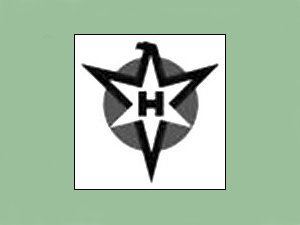Henschel & Son (German: Henschel und Sohn) was a German company, located in Kassel, best known during the 20th century as a maker of transportation equipment, including locomotives, trucks, buses and trolleybuses, and armoured fighting vehicles and weapons.
Georg Christian Carl Henschel founded the factory in 1810 at Kassel. His son Carl Anton Henschel founded another factory in 1837. In 1848, the company began manufacturing locomotives. The factory became the largest locomotive manufacturer in Germany by the 20th century. Henschel built 10 articulated steam trucks, using Doble steam designs, for Deutsche Reichsbahn railways as delivery trucks. Several cars were built as well, one of which became Hermann Göring's staff car. In 1935 Henschel was able to upgrade its various steam locomotives to a high-speed Streamliner type with a maximum speeds of up to 140 km/h (87 mph) by the addition of a removable shell over the old steam locomotive.
Early in 1935, Henschel began manufacturing Panzer I tanks. During World War II, the firm was responsible for license production of the Dornier Do 17Z medium bomber, and in 1939–1940 it began large-scale production of the Panzer III. Henschel was the sole manufacturer of the Tiger I and Tiger II. In 1945, the company had 8000 workers working in two shifts each of 12 hours, and forced labour was used extensively. The company's factories were among the most important bomber targets and were nearly completely destroyed, although throughout the war they did manufacture narrow gauge locomotives.
Henschel Flugzeugwerke aircraft and missiles included:
Henschel Hs 117 Schmetterling (Butterfly), rocket-engined surface-to-air missileHenschel Hs 121, fighter and trainer (prototype)Henschel Hs 122, army co-operation/reconnaissanceHenschel Hs 123, ground-attack (biplane)Henschel Hs 124, heavy fighter and bomber (prototype)Henschel Hs 125, fighter and trainer (prototype)Henschel Hs 126, reconnaissanceHenschel Hs 127, fast medium bomber (schnellbomber prototype)Henschel Hs 128, high-altitude reconnaissance and bomber (prototypes)Henschel Hs 129, ground-attackHenschel Hs 130, high altitude reconnaissance and bomber (prototypes)Henschel Hs 132, jet-engined dive bomber (prototype)Henschel Hs 135, delta wingHenschel Hs 293, rocket-powered glide bombHenschel Hs 294, rocket-powered anti-shipping glide bombHenschel Hs 295Henschel Hs 296Henschel Hs 297 Föhn, 73mm anti-aircraft rocket-launcherHenschel Hs 298, rocket-powered air-to-air missileHenschel Hs P.75, a 1941 design with slightly swept-back wings placed at the rear, swept-back canards at the front, and double pusher propellers at the rear.Henschel Hs P.87, a design similar to the Hs P.75, except that the canards in the front are straight and the wing is curved.Henschel 'Zitterrochen' (Torpedofish), air-to-surface missile (pre-production only)Manufacturing began again in 1948. In 1964, the company took over Rheinische Stahlwerke and became Rheinstahl Henschel AG, in 1976 Thyssen-Henschel, and 1990 ABB Henschel AG. In 1996, the company became ABB Daimler Benz Transportation Adtranz. The company was subsequently acquired by Bombardier (Canada) around 2002. The Kassel facility still exists and is one of the world's largest manufacturers of locomotives.
Private, mining and industry railways
Generation 1Henschel DH 110Henschel DH 200Henschel DH 360Henschel DH 550Generation 2Henschel DH 240Henschel DH 360Henschel DH 390Henschel DH 440Henschel DH 630Henschel DH 875Henschel DHG 630Henschel DH 500Henschel DH 500Generation 3Henschel DH 120 BHenschel DH 180 BHenschel DH 240 BHenschel DH 360 BHenschel DH 500 BHenschel DH 120 BHenschel DH 120 BHenschel DH 120 BHenschel DH 120 BHenschel DH 360 CaHenschel DH 440 CaHenschel DH 500 CaHenschel DH 600 CaHenschel DH 700 CiHenschel DH 360 DHenschel DH 700 DHenschel DH 850 DGeneration 4Henschel DHG 500 CHenschel DHG 700 CHenschel DHG 1000 BBHenschel DHG 1200 BBGeneration 5Henschel DHG 300 BHenschel DHG 700 CHenschel DHG 700 C-FHenschel DHG 800 BBHenschel DHG 1200 BBGeneration 6Henschel DHG 300 BHenschel DE 500 CEsslingerHenschel DHG 160 BHenschel DHG 200 BHenschel DHG 240 BHenschel DHG 275 BHenschel DHG 330 CBundesbahnHenschel-BBC DE2500ExportHenschel DHG 625 C as SJ-Series V 4 und SJ-Series V 5Henschel DH 600 C for Export to Ghana and SudanHenschel NY5 for the Chinese RailwaysHenschel NY6 for the Chinese RailwaysHenschel NY7 for the Chinese RailwaysHenschel DHG 2500 BB for India Railways as WDM-3 - 8 built 1970Chief Designer Erwin AdersDr. Herbert A. Wagner (see Henschel Hs 117, Henschel Hs 293, Henschel Hs 294, Supercavitation, Operation Paperclip)
